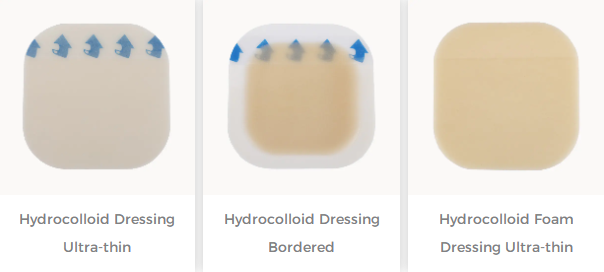A pressure sore wound is a common tissue injury that often occurs in areas that have been under heavy pressure for a long time, such as the back, buttocks, legs, etc. While pressure sore wounds are mostly unavoidable, a few preventive measures and the right care can help reduce pain and speed recovery.
How Do Pressure Ulcer Wounds Form?
A pressure sore wound forms because the tissue is subjected to excessive pressure and friction, resulting in damage to the skin and tissue. This injury is usually the result of long-term pressure on one part of the body by a heavy object. For example, if a person sits in a hard chair for a long time, the heavy pressure on the buttocks can cause damage to the skin on the buttocks, creating a pressure sore wound. Likewise, if a person stands for long periods of time and works under heavy pressure, the skin and tissue on the back and legs can also be affected, creating a pressure-sore wound.
While pressure sore wounds are mostly unavoidable, there are a few things you can do to help reduce pain and speed recovery.
There are various types of dressings that can be used on pressure ulcer wounds, here are a few of the common ones and their benefits:
A: Silicone gel foam dressing is a commonly used pressure ulcer wound dressing, it has the following benefits:
Pain Relief: Silicone gel foam trim can absorb exudate around the wound, thereby reducing wound pain. Its sensory-modulating properties can help reduce numbness and tingling around wounds.
Promote wound healing: Silicone gel foam accessories can maintain a moist environment around the wound, thereby promoting wound healing. It can also reduce the friction and irritation between the wound and the outside world, thereby reducing the inflammation and pain of the wound.
Reduce the risk of infection: The silicone gel foam dressing can effectively absorb exudate around the wound, thereby reducing the risk of infection. It can also prevent the wound from being polluted and infected by the outside world, so as to ensure the healing of the wound.
Ease of care: Silicone foam trims can be easily cleaned and disinfected for easy wound care. In addition, its shape and elasticity can adapt to wounds of different shapes and sizes, thereby reducing friction and irritation.
Overall, the use of silicone gel foam dressings can help reduce pain in pressure ulcer wounds, promote wound healing, reduce the risk of infection, and provide ease of care. However, proper application and care need to be taken when using silicone gel foam excipients to ensure wound safety and healing.
B: Hydrocolloid foam dressing is a new type of dressing that combines hydrocolloid dressing with foam dressing, it has the following benefits:
Pain Relief: Hydrocolloid foam dressings can absorb exudate around the wound, thereby reducing wound pain. Additionally, the hydrogel component in hydrocolloid foam dressings can help relieve wound discomfort.
Promote wound healing: Hydrocolloid foam dressing can maintain a moist environment around the wound, thereby promoting wound healing. In addition, bioactive components in hydrocolloid foam dressings can promote wound regeneration and repair.
Reduce the risk of infection: Hydrocolloid foam dressings can effectively absorb exudate around the wound, thereby reducing the risk of infection. In addition, hydrocolloid foam dressings have better biocompatibility and are less likely to cause wound infection.
EASY CARE: Hydrocolloid foam dressings can be easily cleaned and disinfected for easy wound care. In addition, the shape and elasticity of hydrocolloid foam dressings can adapt to wounds of different shapes and sizes, thereby reducing friction and irritation.
Overall, the use of hydrocolloid foam dressings can help relieve pressure ulcer wound pain, promote wound healing, reduce the risk of infection, and provide ease of care. However, proper application and care are required when using hydrocolloid foam dressings to ensure wound safety and healing.
Here are some precautions and proper care:
Keep skin clean and dry. This is the most important step in preventing pressure ulcer wounds. If the skin is kept dry and clean, it is less likely for bacteria to grow, thus reducing the formation of pressure sore wounds.
1. Avoid excessive stress. Minimize pressure on one area of your body, such as using a cushion or pressure relief pad to reduce heavy pressure on your hips or back.
2. Use proper mattresses and pillows. Using a soft mattress and low pillows can reduce excessive pressure on the back and buttocks, which can reduce the formation of pressure sore wounds.
3. Watch your diet. A proper diet can help strengthen the skin and tissue resistance, thereby reducing the formation of pressure sore wounds.
Keep the wound clean and dry. Once a pressure-sore wound has developed, it is very important to keep the wound clean and dry. If the skin around the wound is red and swollen or oozes fluid, you should contact your doctor for diagnosis and treatment in time.
In conclusion, pressure ulcer wounds are mostly unavoidable, but some preventive measures and proper care can help reduce pain and speed recovery. If you are under heavy pressure for a long time, you should take appropriate measures in time to avoid the formation of pressure sore wounds.
For more information on Innomed® Silicone Foam Dressing, refer to the previous articles. If you have customized needs, you are welcome to contact us; we will serve you wholeheartedly. At Longterm Medical, we transform this data by innovating and developing products that make life easier for those who need loving care.
Editor: kiki Jia
Date: June 1, 2023

 English
English عربى
عربى Español
Español русский
русский 中文简体
中文简体








